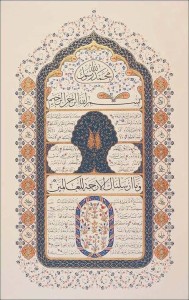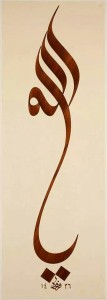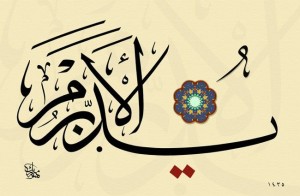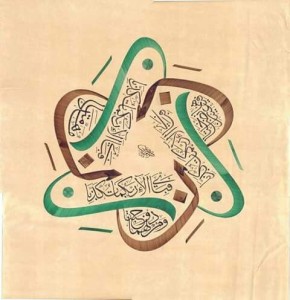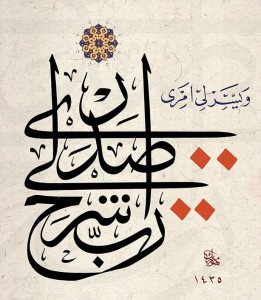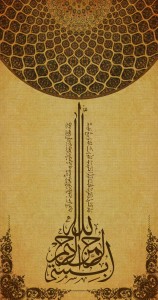Mans Place In The Universe and How Islam Encouraged People To Think About Creation
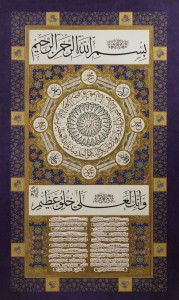 Islam methodically encouraged people to think about creation and its creator, Allah mentions all the laws of creation, which He has encouraged us to think about in the Qur’an;
Islam methodically encouraged people to think about creation and its creator, Allah mentions all the laws of creation, which He has encouraged us to think about in the Qur’an;
“And He imparted unto Adam the names of all things; then He brought them within the ken of the angels and said: “Declare unto Me the names of these [things], if what you say is true.”
They replied: “Limitless art Thou in Thy glory! No knowledge have we save that which Thou hast imparted unto us. Verily, Thou alone art all-knowing, truly wise.”
Said He: “O Adam, convey unto them the names of these [things].” And as soon as [Adam] had conveyed unto them their names, [Allah] said: “Did I not say unto you, `Verily, I alone know the hidden reality of the heavens and the earth, and know all that you bring into the open and all that you would conceal’?”(2:31-33)
“And He taught Adam the names, that is, the names of things named, all of them, by placing knowledge of them into his heart; then He presented them…the majority of which concerned intellectual beings, to the angels and said, to them in reproach, ‘Now tell Me, inform Me, the names of these, things named, if you speak truly’, in your claim that I would not create anything more knowledgeable than you (Angels), or that you are more deserving of this vicegerency (responsibility); the response to the conditional sentence is intimated by what precedes it.” (Tafsir al Jalalayn)
Allah says to his Angels who live in the Unseen part of our world and see what is veiled to us, “Did I not say unto you, `Verily, I alone know the hidden reality”, Ghayb al Samawati wal Ard, “of the Heavens and the Earth”, in other words how the heavens and the earth work and the laws they run by, Allah was referring to a type of Ghayb (Unseen reality) the Angels did not see which was the Laws of the Heavens and the Earth.
At that time, in response the Angels referred to their understanding of Mans nature when Allah mentioned He would make Man His Khalifah (vicegerent) on earth, but in reply to them Allah referred to the Nature of the Universe when He Answered them regarding Man, saying to them there is a connection between mans physiology, his body, that you are objecting about and the nature of the Universe, which you haven’t learnt yet, what this connection is lies in what Allah had granted Adam at that time, the names of all things, and had just shown the Angels.
“AND LO! Thy Sustainer said unto the angels: “Behold, I am about to establish upon earth (a Khalifah) one who shall inherit it.” They said: “Wilt Thou place on it such as will spread corruption thereon and shed blood -whereas it is we who extol Thy limitless glory, and praise Thee, and hallow Thy name?” [Allah] answered: “Verily, I know that which you do not know.”(2:30) Said He: “O Adam, convey unto them the names of these [things].” And as soon as [Adam] had conveyed unto them their names, [Allah] said: “Did I not say unto you, `Verily, I alone know the hidden reality of the heavens and the earth, and know all that you bring into the open and all that you would conceal’?”(2:31-33)
The Angels understood they where a perfect creation, this was their reality as flawless beings, because they where perfect they thought they were complete, they could not perceive how a creation more exalted than them could be created, so they came to believe they where the Highest of Allah’s creations and took this as a given, having seen none of his other creatures surpass them. In response to this Allah said to them I have created Man and in regards to him, you do not know the Hidden realities of the Heavens and the Earth, implying Mans connection to the hidden Laws of the universe, which through them He would surpass the Angels in worth, but not strength and ability.
This same shortsightedness Iblis (Satan) suffered from in regards to man, when He objected to Adam surpassing him, Allah asked him why He objected, He replied he was stronger than him, fire being able to burn clay, but the example Allah had just set was regarding knowledge not strength, Adam would become more knowledgeable than him while Satan was limited in what he was capable of understanding, He was a lessor creation, so He replied in terms of strength while the point Allah was making to the Angels and Jinn was regarding knowledge. Adam had a higher rank than the Angels because of knowledge, the one with more knowledge is better capable of knowing Allah, and that is the reason why Allah created the Universe, to know him.
This entire affair is regarding man’s body in relation to the Angels and Jinn’s bodies, Allah makes this clear in the Quran, “It is We Who created you and gave you shape; then We bade the angels bow down to Adam, and they bowed down; not so Iblis (Satan); He refused to be of those who bow down. (Allah) said: “What prevented thee from bowing down when I commanded thee?” He said: “I am better than he: Thou didst create me from fire, and him from clay.” (Allah) said: “Get thee down from this: it is not for thee to be arrogant here: get out, for thou art of the meanest (of creatures).” (7: 11–13)
In another verse Allah mentions the command (laws) in His creation, “VERILY, your Sustainer is Allah, who has created the heavens and the earth in six aeons, and is established on the throne of His almightiness. He covers the day with the night in swift pursuit, with the sun and the moon and the stars subservient to His command (Laws): oh, verily, His is all creation and all command (they are mentioned separately). Hallowed is Allah, the Sustainer of all the worlds! (In the Universe)” (7:54)
When Allah mentioned “all creation” along with “all command” the rules of tafsir say the matters relate to each other, so in fact Allah is referring to the Laws of creation which are his command in creation.


